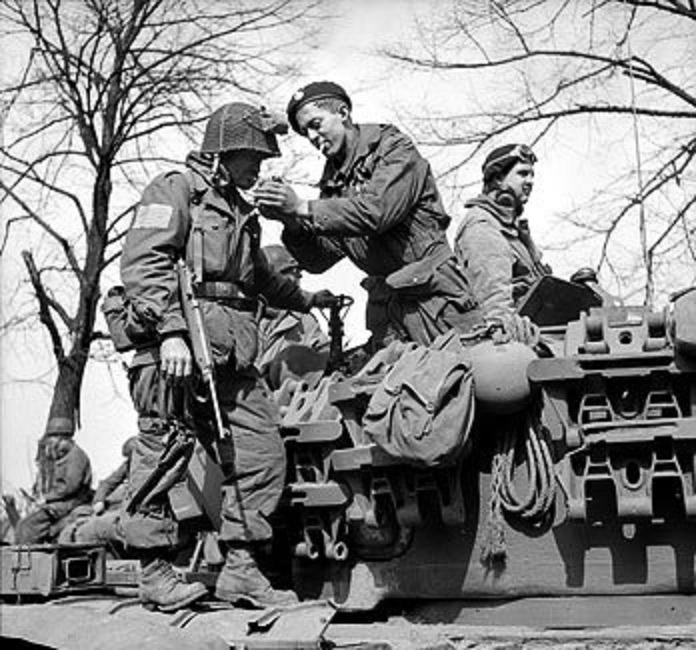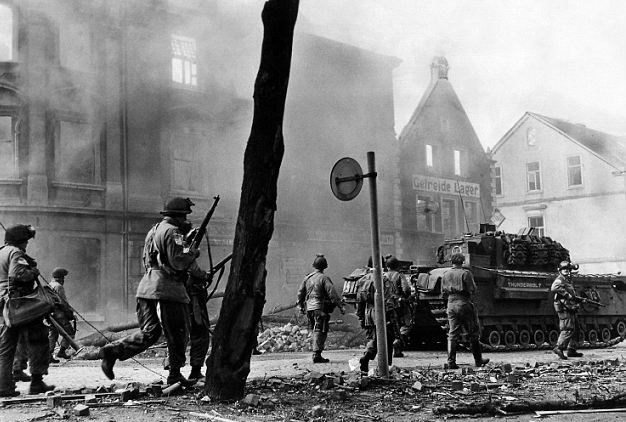Exploring History
British Guards and US Paratroops fight their way to Munster
Posted on: March 31, 2020
Having crossed the Rhine against patchy German resistance the pressure was on to keep up the advance. It was decided that the British 6th Guards Tank Brigade would link up with US paratroops of the 513 Parachute Regiment to form an ad hoc mobile unit to take Munster . While the Germans and Russians used troops specially trained to ride on tanks it was less common for the Americans, particularly paratroops. The Brigade’s Churchill tanks were also an unlikely vehicle to lead a fast road based advance, being slow at 15 mph as opposed to 25 mph for a Sherman. But they were reliable and had a flat top suitable for troops to ride on.
The American and British troops worked well together, with the tanks clearing obstacles and the paratroops dealing with enemy soldiers and taking prisoners. They advanced steadily and on 27th March the Scots Guards group drove through the night to take Dorsten, on the 29th key bridges were captured at Dulmen.

The Churchill lacked the punch to take on German tanks such as the panther or tiger but on one occasion managed to do just that. In the confusion of driving at night a panther found itself mixed in with the tanks of Lt. Stannard’s Coldstream troop. Realising this before the Germans did his gunner put 2 rounds into the less armoured rear of the panther and knocked it out.
Munster was reached on the 2nd April and fortunately was not defended to the last by the Germans. The final attack was delayed till 10.30am to allow time for the defenders to surrender or withdraw which most did. The Guards tanks then advanced through the rubble strewn streets with the paratroops to clear out the pockets of resistance.

With the city taken the tanks continued their advance a few days later and the paratroops were relieved by another unit. However, records recall that a brewery had been found in Munster and so the British and Americans may well have celebrated their partnership before parting.
Lt Colonel WH Simpson, who commanded the US troops, praised the action in a letter to the British command.
‘I was particularly impressed by the practical manner in which the division and the brigade jointly solved the problem of close co-operation during the rapid advance. ….Officers and men of the 17th Airborne Division are unanimous in their commendatory remarks regarding the work of the brigade during their period of close association. …..I feel that it represents one of the finest examples of team work, spontaneous co-operation, and effective co-ordination that has been brought to light during the entire campaign.
Here’s our new video on this https://youtu.be/9W4IyDGRHmY

